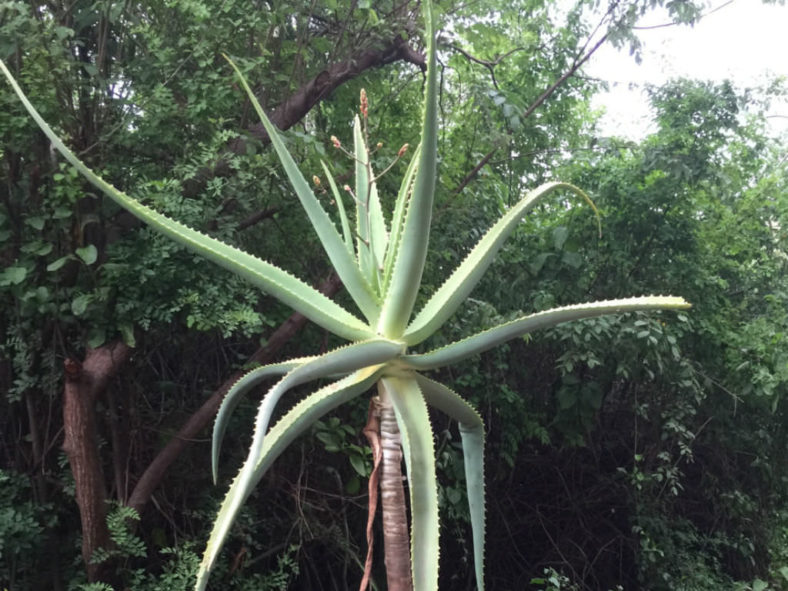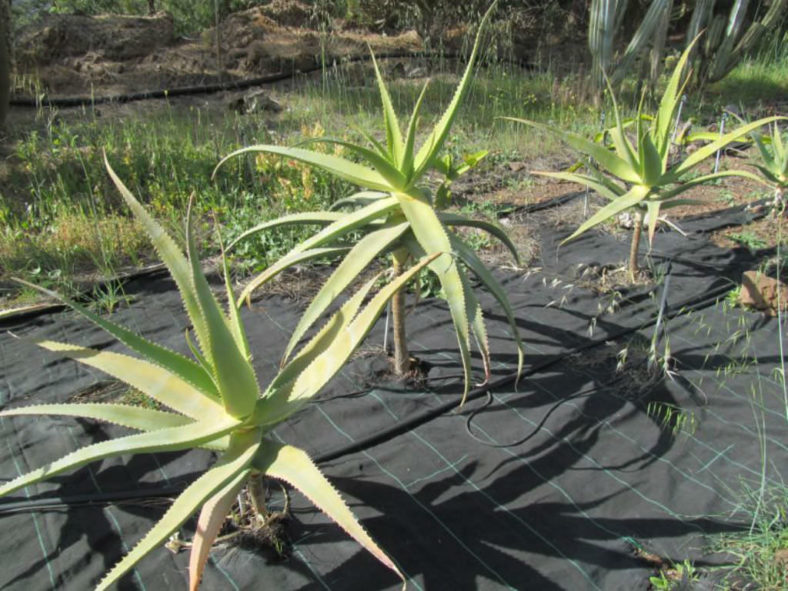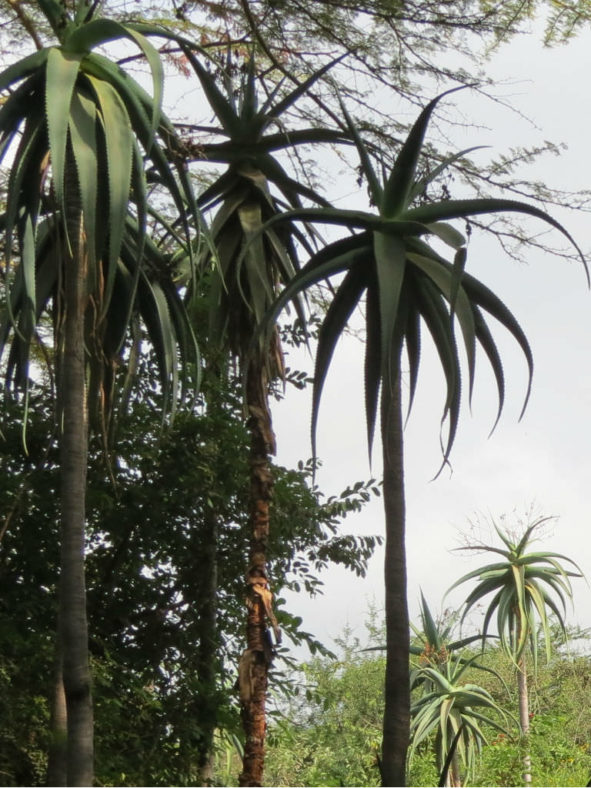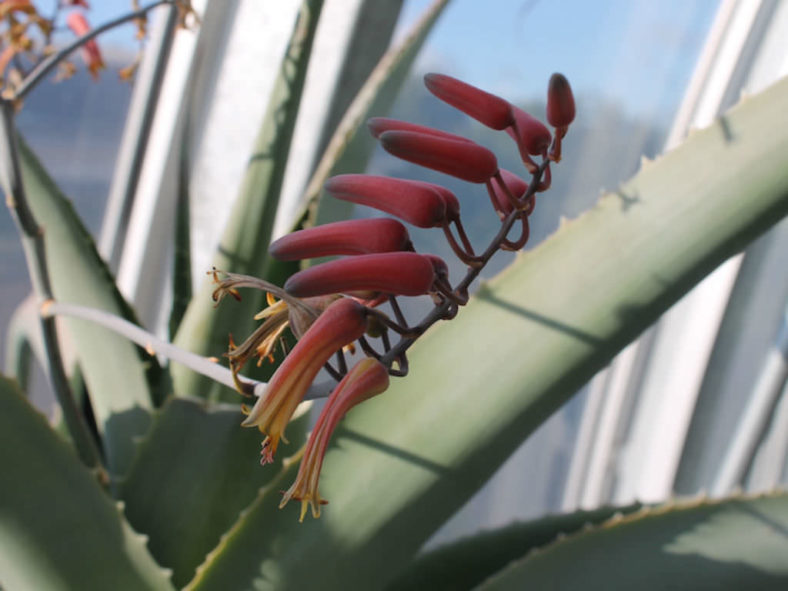Scientific Name
Aloe ballyi Reynolds
Common Name(s)
Rat Aloe
Scientific Classification
Family: Asphodelaceae
Subfamily: Asphodeloideae
Genus: Aloe
Etymology
The specific epithet "ballyi (BAL-lee-eye)" honors Peter René Oscar Bally (1895-1980), a Swiss botanist, taxonomist, botanical illustrator, and plant collector.
Origin
Aloe ballyi is native to Kenya and Tanzania.
Description
Aloe ballyi is a rare succulent with a slender, unbranched stem topped with a crown of long, grey-green leaves with white marginal teeth. The stem can grow up to 20 feet (6 m) tall and 6 inches (15 cm) in diameter. The leaves are mostly straight on young plants, becoming recurved towards the tip with age, and can measure up to 3 feet (90 cm) long and 6 inches (15 cm) wide. When broken, they give off a smell reminiscent of rats.
The tubular flowers are carmine to reddish-orange and appear in a branched inflorescence that can grow up to 2 feet (60 cm) tall.

How to Grow and Care for Aloe ballyi
Light: When growing A. ballyi indoors, place your plant in a window that gets plenty of bright indirect sunlight. Rotate the pot once or twice a week so that all sides of the plant receive equal lighting. Outdoors provide light shade, especially during the hottest parts of the day.
Soil: Plant A. ballyi in a well-drained soil mix specially formulated for succulents, or make your own. Drainage is essential because too much moisture around roots can cause root rot.
Hardiness: When temperatures shift below 50 °F (10 °C), it is time to bring your plant back inside. A. ballyi can withstand temperatures as low as 25 to 50 °F (-3.9 to 10 °C), USDA hardiness zones 9b to 11b.
Watering: This succulent needs regular watering but is very tolerant of short periods of drought. Water deeply, but only when the soil is dry. Cut back on watering during the winter months. Do not let water stand in the rosettes.
Fertilizing: A. ballyi generally does not require fertilizer but may benefit from the extra nutrients. Feed with a fertilizer for succulents in spring and summer only, following the label directions.
Repotting: This plant is not particularly fast-growing and will only rarely need repotting. To prevent rootbound, repot it in the spring in a container a few inches larger in diameter every few years.
Propagation: A. ballyi can be propagated using offsets, cuttings, or seeds from a mature plant. In late spring or early summer, remove offsets from the mother plant or take cuttings with a sharp knife. For best results, sow seeds during the warm months.
Learn more at How to Grow and Care for Aloe.
Toxicity of Aloe ballyi
A. ballyi is one of the few poisonous Aloes.
Links
- Back to genus Aloe
- Succupedia: Browse succulents by Scientific Name, Common Name, Genus, Family, USDA Hardiness Zone, Origin, or cacti by Genus
Photo Gallery
Click on a photo to see a larger version.


